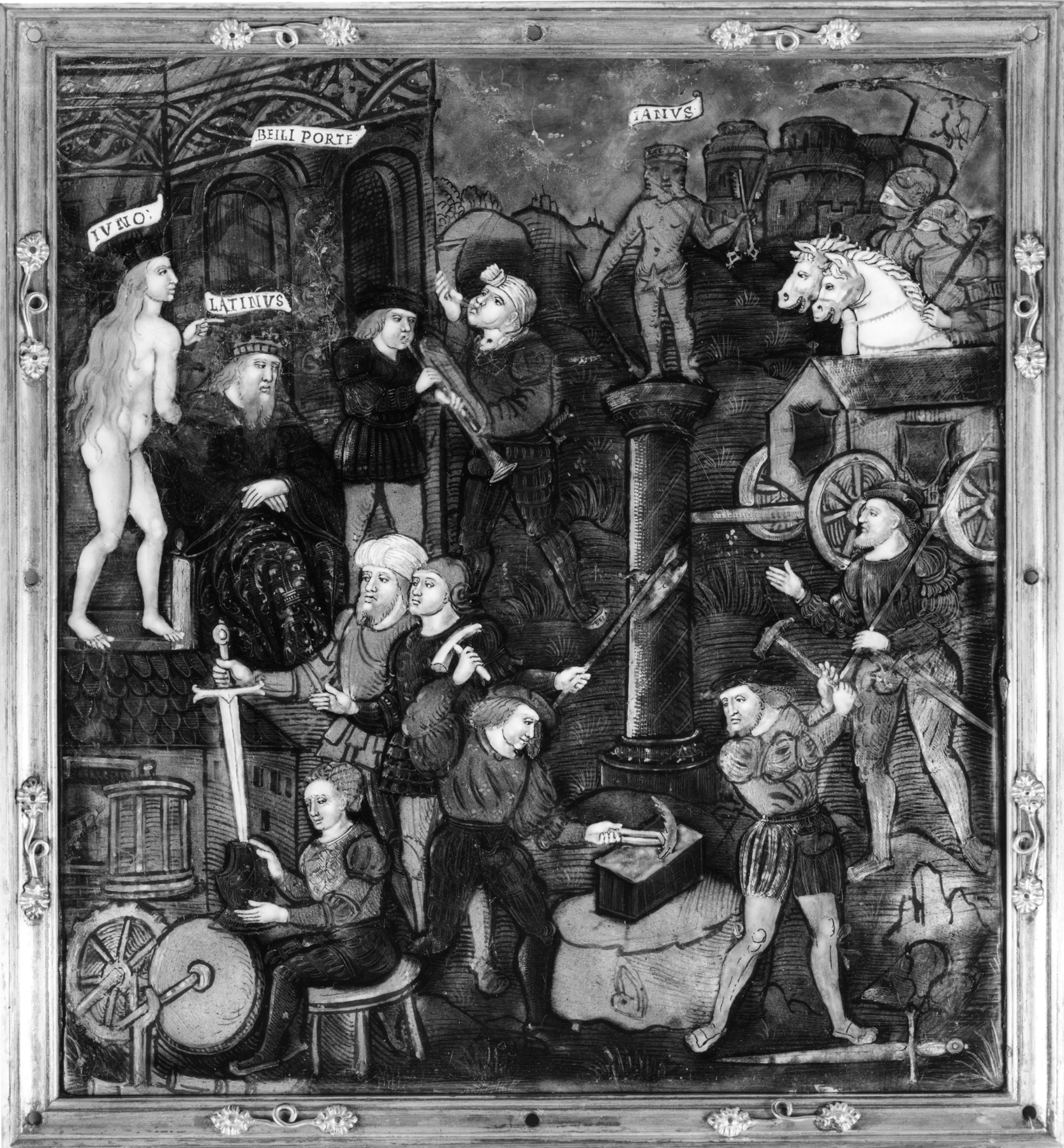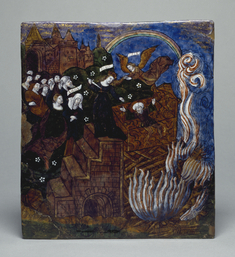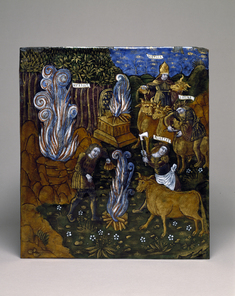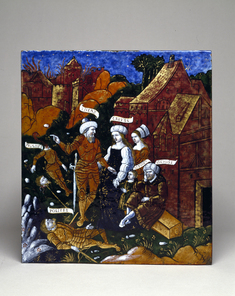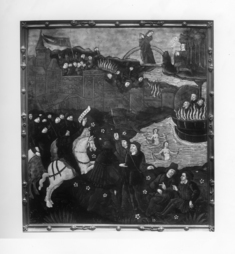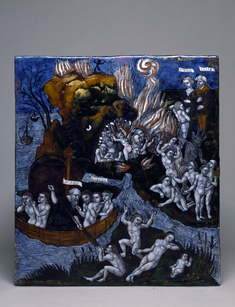War is Declared Against the Trojans
(Renaissance Europe )
The Aeneid plaques are the earliest known Limoges enamels which deal with a classical subject. This plaque pictures King Latinus seated with his hands folded, unwilling to declare war on Aeneas and his companions who have just landed in Italy. The goddess Juno, however, an enemy of the Trojans, is about to open the gates of the temple of the god of war, Janus, while Latinus' men proceed with sounding their trumpets, readying their body armor, tempering their swords, and forging new weapons (Aeneid, VII, vv. 601-640).
This plaque is part of a series whose designs were based upon the woodcut illustrations of an edition of Virgil, "Opera," edited by Sebastian Brant and printed by Johann Grüninger in Strasbourg, September 9, 1502 (84th illustration, fol. 303 vo). The same cuts appeared in an edition issued at Lyons in 1517 by Sacon.
Provenance
Provenance (from the French provenir, 'to come from/forth') is the chronology of the ownership, custody, or location of a historical object. Learn more about provenance at the Walters.
George Robinson Harding, London [date and mode of acquisition unknown]; Henry Walters, Baltimore, May 21, 1912, by purchase; Walters Art Museum, 1931, by bequest.
Conservation
| Date | Description | Narrative |
|---|---|---|
| 10/8/1987 | Treatment | other |
| 11/2/1987 | Treatment | cleaned; loss compensation; examined for condition |
Geographies
France, Limoges (Place of Origin)
Measurements
H: 8 3/4 x W: 7 13/16 in. (22.3 x 19.8 cm)
Credit Line
Acquired by Henry Walters, 1912
Location in Museum
Not on view
Accession Number
In libraries, galleries, museums, and archives, an accession number is a unique identifier assigned to each object in the collection.
In libraries, galleries, museums, and archives, an accession number is a unique identifier assigned to each object in the collection.
44.353

